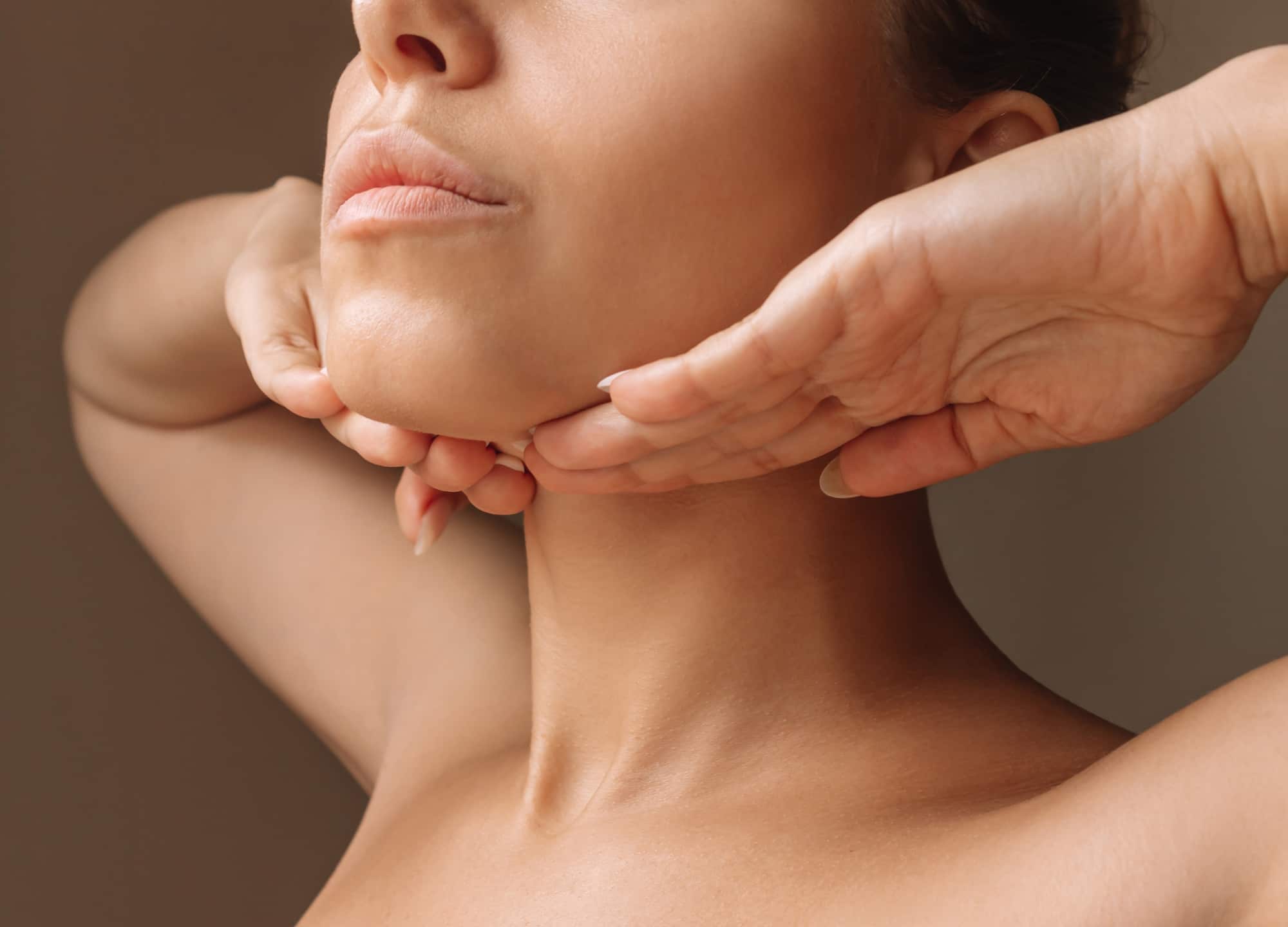Featured Experts
Dr. Sarmela Sunder, a board-certified facial plastic surgeon in Beverly Hills, California
Dr. Steven H. Williams, a board-certified plastic surgeon in San Francisco
Although it was once thought of as a result of weight gain, the reality is that a double chin can happen to anyone. Your genetics, your bone structure, and even aging can lead to a pocket of protrusive fat beneath the jaw, otherwise known as submental fat. And the usual time-tested methods of fat reduction, like exercise, can’t help all that much when it comes to this stubborn spot.
The good news? Both surgical and nonsurgical treatments can help, the two most popular being submental liposuction (aka chin lipo) and Kybella, an injectable treatment—and surgeons often see patients debating them. Here, we asked two board-certified plastic surgeons to share how best to decide.
What is Kybella?
Kybella is an injectable treatment that uses deoxycholic acid, an enzyme naturally found in the gut, to permanently dissolve the fat cells. (It’s also the only cosmetic injectable approved by the FDA for this purpose.) Multiple sessions are almost always required, says Dr. Sarmela Sunder, a board-certified facial plastic surgeon in Beverly Hills, California, who finds that patients tend to be undertreated. “With Kybella, a lot of people need anywhere from three to five sessions to reach a significant difference—and normally, you want to wait about eight weeks between sessions,” she says. In other words: time and patience are key.
What is chin lipo?
Chin liposuction is liposuction in the submental region. “With liposuction, you’re physically removing the fat cells,” says Dr. Sunder. Your surgeon will make a small incision and use a cannula to suck out the fat cells. The procedure can be as short as 15 minutes, and it can often be done with local anesthesia. Unlike Kybella, it’s a one-and-done situation, in which the single procedure leads to a permanent (and often more dramatic) result.
What is recovery like for chin lipo vs. Kybella?
Even though Kybella is minimally invasive, it does come with an extended recovery period. “Each time you have a Kybella treatment, you have significant downtime associated with it,” says Dr. Sunder, who says that it can be anywhere from one to two weeks. And, most notably, it can cause noticeable swelling under the chin. “The tissue’s heavy, it’s kind of jiggly, and it’s not subtle at all,” she says. Winter is the best time to get it, so you can wear a turtleneck or scarf.
Meanwhile, with chin liposuction, the recovery lasts about one week, and the pain can generally be managed with Tylenol and similar over-the-counter medications. “You might be a little bit swollen, but you don’t look worse post-op than when you started,” says Dr. Sunder. That said, “submental liposuction can be involved with more bruising and, of course, leaves a small scar—where Kybella typically doesn’t,” says Dr. Steven H. Williams, a board-certified plastic surgeon in San Francisco.
Who is the ideal candidate for each procedure?
For both procedures, it’s critical that you’re targeting the right layer of fat. (For reference, starting from the outside, you’ve got the skin, the subcutaneous fat, the muscle, and then a lower, deeper layer of submuscular fat.) Both Kybella and chin lipo are “meant to target subcutaneous fat, but a lot of patients have what’s considered subplatysmal, or submuscular fat,” Dr. Sunder says. She’s found that some patients will get Kybella when in fact they need a solution for that submuscular fat, which is usually a neck lift with manual fat removal.
If you have good skin elasticity (meaning it’s firm and not sagging) and a small pocket of subcutaneous fat—and you don’t want either scars or surgery—then “Kybella is an excellent choice,” says Dr. Williams. Dr. Sunder, for her part, also recommends it in cases where she thinks the patient needs only two to three vials in a single session.
If you’re looking for a dramatic transformation though, then chin liposuction might be the way to go. “Patients tend to be happier with chin lipo, because most patients don’t undergo enough Kybella sessions,” she says. (Since multiple sessions, eight weeks apart, are needed, you could easily wait up to a year to see the final results.) And chin lipo tends to be a quick, manageable procedure for most people, although as with any surgery, it does come with the risk of infection and other complications.
Chin liposuction is also a good idea if your skin doesn’t have great elasticity. In this case, Dr. Williams pairs it with a radiofrequency skin-tightening procedure, to address this during the surgery. “The surgical option allows us to have this additional technique available,” he says.
Is there a difference in cost?
While one might guess that liposuction is automatically more expensive, since it’s a surgical procedure, this doesn’t always account for the amount of Kybella needed to get good results. People assume “Kybella is cheap because they hear the price of just one vial,” says Dr. Sunder. “Most people need anywhere from three to five vials per session.” Depending on how much fat you have, it could be equally expensive—if not more so—to do Kybella, although this depends on your surgeon and where they’re located.
All told, there’s no single home-run option that works for everyone with a double chin—and for some, neither Kybella or chin lipo will be the right procedure for their case. But parsing the differences and drawbacks between them can ultimately make it easier to decide what might work best for your personal preferences.











